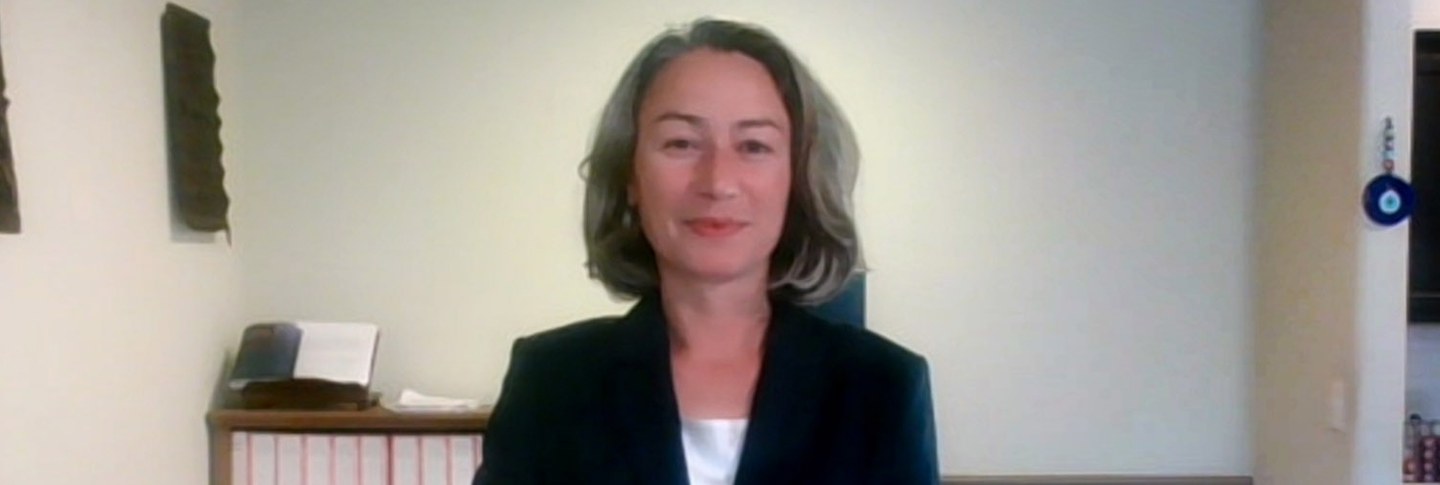Lilia Campana, affiliated scholar at the Institute of Nautical Archaeology at Texas A&M University, is a fellow in Byzantine Studies. Her research report, “Byzantine Ship Design and Its Legacy in the West: Nautical Archaeology, Shipbuilding Texts, and Mediterranean Contexts,” explored the evolution and influence of Byzantine shipbuilding methods in the Mediterranean.
Q&A with Lilia Campana
What were the notable methods of Byzantine shipbuilding?
Between the seventh and eleventh century in the eastern Mediterranean, there was considerable progress in the technology of ship construction. In the Bronze Age, shipwrights used a “shell-first” method, where the planks of the hull were assembled before frames were inserted, so the planking dictated the shape of the vessel. With this method, ship size and quality largely depended on the shipwright’s keen eye. By the end of the first millennium CE, however, eastern Mediterranean shipwrights had reversed the construction process to a “skeleton-first” method: rather than starting with the exterior of the hull, they erected predesigned frames on the keel, creating a mathematically determined framework that outlined the shape of the ship. This method was advantageous for many reasons, including standardizing shipbuilding processes and improving the predictability of a ship’s final form and cargo capacity.
The transition to the skeleton-first construction method occurred over the course of several centuries, evidenced by several landmark shipwrecks that have been excavated. Dozens of Byzantine shipwrecks dating from the fifth through eleventh centuries provide archaeological evidence for the transition, and eight Byzantine shipwrecks excavated between 2004 and 2012 at Yenikapı in Istanbul by the Institute of Nautical Archaeology (INA) under the direction of Cemal Pulak provide paramount archaeological evidence for the last stages of the transition to skeleton-first construction. In the most advanced form of skeleton-first construction—called whole-molding—key frames were predesigned using a wooden mold incised with incremental marks. The increments dictated the rising and narrowing of successive frames from bow to stern, and they were calculated by a series of geometric progressions. The shipwreck found at Serçe Limanı, which dates from circa 1025 and was excavated from 1977 to 1979 by INA, indicates the total transition to skeleton-first ship construction: the morphology of the hull was entirely achieved by this whole-molding method.
How is Byzantine shipbuilding connected to early modern Venice?
Aside from the archaeological evidence, the first visual and textual evidence for the Byzantine whole-molding method appears in medieval Venetian shipbuilding texts, like the Libro di appunti di Zorzi Trombetta da Modon (The notebook of Zorzi the trumpeter from Modone), currently in the British Library (Cotton MS Titus A XXVI, ff 2-60). It is a zibaldone (collection of miscellanies) written between 1444 and 1449 by a trumpeter named Zorzi in the service of a Venetian merchant. Zorzi was from Modone, a town in southern Greece that was technically a Venetian possession at the time but retained prior Byzantine and eastern Mediterranean culture. The manuscript records geometrical diagrams used by Venetian shipwrights to produce ship skeletons.
The Libro di navigar, a late fourteenth-century compilation of texts related to navigation, shipbuilding, and mathematical problems by multiple anonymous authors, now in the Biblioteca Civica Angelo Mai in Bergamo, Italy, has similar diagrams and explanations for how to calculate the whole-mold. Two shipbuilding methods described in these manuscripts—the triangle and half-moon methods—are based on the Byzantine mathematical tradition, especially Pythagoras, who was later incorporated into Euclidean geometry.
How is our understanding of the Mediterranean enriched by your naval and maritime history approach?
My project aims to demonstrate that whole-molding methods eventually adopted throughout the Mediterranean originated in the Byzantine Empire. Medieval shipbuilding manuscripts and early modern European naval treatises, as well as numerous western Mediterranean shipwrecks, document the widespread use of Byzantine whole-molding methods in the shipyards of European maritime empires. Drawing on extensive archival research in Italy, England, France, and Spain, I am combining the evidence from primary texts such as shipbuilding manuscripts, historical records, and naval treatises with archaeological data from Byzantine and later-period shipwrecks to systematically study the whole-molding shipbuilding method.
This approach could also offer us more insight into the Byzantine scientific culture of the time: for example, after my report, I had the opportunity to have a helpful and stimulating conversation about Byzantine environmental history and timber procurement with visiting scholar Paul Stephenson, who is investigating human responses to and interactions with the natural world and raw materials like wood in late Roman and early Byzantine art. I am also grateful for the collegial intellectual environment that [Resident Program Director for Byzantine Studies] Anna Stavrakopoulou has created in this remote format; I have befriended Emilio Bonfiglio and Stefanos Alexopoulos, who have offered support, advice, and good humor in these trying times.
May Wang is postgraduate writing and reporting fellow at Dumbarton Oaks. Photo by Richard Tong, postgraduate digital media fellow.

